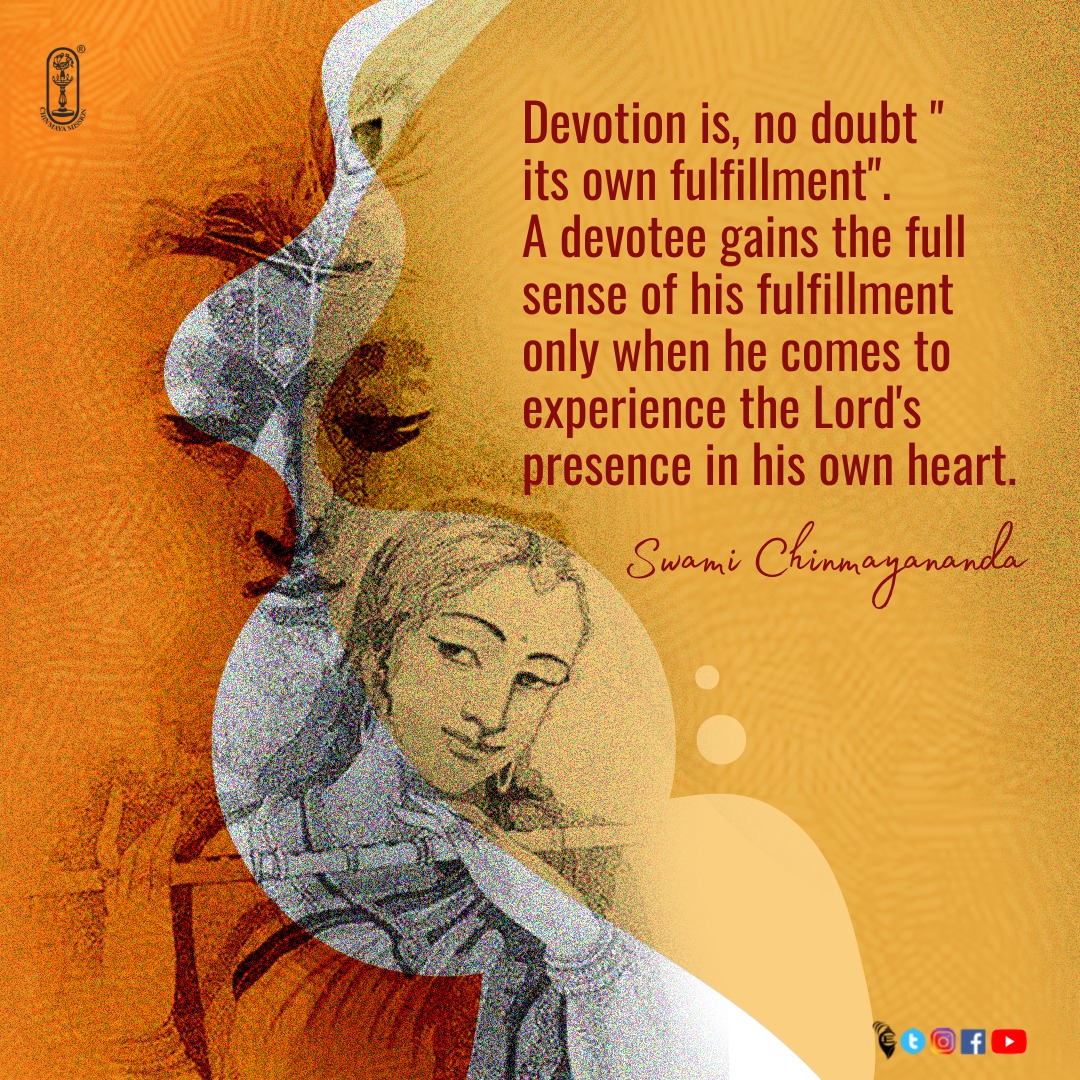KAIVALYA UPANISHAD : 3. Swami Advaitanand Ji
==============================================================
==============================================================
Sunday, March 20, 2022. 20:00.
From the Atharva Veda (26 Mantras) : “The HOMOGENEITY of Brahman”
==============================================================
"Reflections : by Swami Gurubhaktananda : on the Series of 8 Lectures by Swami Advaitanand Ji : Acharyaji of the 15th Batch Sandeepany Vedanta Course : held at Sandeepany Sadhanalaya, Powai, Mumbai : From 23rd November – 30th November, 2012."
==============================================================
Adi Shankaracharya Swami Sivananda Swami Tapovanji Swami Chinmayananda
SERVE LOVE GIVE PURIFY MEDITATE REALISE
==============================================================
1. THE PRELIMINARIES : (Mantras 1-3a, 3 no.)
Mantram- 1: The Yearning for Divine Knowledge
THIS INTRODUCTORY SECTION covers basic details we need to know when beginning the spiritual path. The pre-qualifications are covered. We are told something to inspire us to want this divine knowledge. Then we are told what equipment is needed for this journey.
-----------------------------------------------------------------------------------------------------------
Mantram - 1: The Yearning for Divine Knowledge
1 om atha ashvalayanah
2 bhagavantam parameshthinam upasama iti uvacha.
3 adhihi bhagavan ‘brahma-vidyam’ varishtham
4 sada sadbhih sevyamanam nigodham;
5 yatha achirat sarva-papam vyapohya
6 ‘paratparam purusham’ yati vidwan.
----------------------------------------------------------------------------------------------------------
Translation :
1 om atha ashvalayanah = Om. With that, let us begin:
There was a student named Aashvalaayana.
2 bhagavantam parameshthinam upasama iti uvacha. = The Revered Lord
Parameshthi, the Creator, did he approach and spoke to Him thus:
3 adhihi bhagavan ‘brahma-vidyam’ varishtham = Teach me, O Revered
Sir, the “SCIENCE OF REALITY”, said to be the highest
4 sada sadbhih sevyamanam nigodham; = secret guarded always by
good people;
5 yatha achirat sarva-papam vyapohya = by which, all sins are soon
discarded; and
6 ‘paratparam purusham’ yaati vidwan. = the supreme Self is
reached by the wise.
--------------------------------------------------------------------------------------------------------
Commentary :
The student is Aashvalayana, who is a great teacher of Vedanta himself. He is an Adhikari or qualified student for this knowledge.
1 Atha: “thereafter”. After what?
The student is Ashvalayana, who has developed sufficient dispassion for the world by doing Karma Yoga and has attained a reasonable degree of purity of heart and steadiness of mind, i.e. Chitta Shuddhi and Chitta Ekagrata. These are the qualifications.
------------------------------------------------------------------------------------------------------------
2 This is a good point to introduce the Cosmic Hierarchy:
The Teacher is none other than Lord Brahma or Ishwara Himself, the Lord of Creation, which fact makes this Upanishad most valuable among all the minor Upanishads. Brahmaji is the highest authority one may approach for instructions on this topic.
---------------------------------------------------------------------------------------------------------
3 Bhagavan:
The traditional definition of this word has been studied in earlier texts. It is “One who possesses the six virtues: Aiswarya, Veerya, Yashas, Shree, Jnana and Vairagya” – i.e. excellence, valour, fame, prosperity or opulence, knowledge and dispassion.
There are two other definitions which are more appropriate in this text, and which Acharyaji gave us:
i) The designation of Brahmaji as Ishwara, Consciousness associated with the Total Creation at Causal level, has already been explained. From this, the meaning of Bhagavan arises as: “The Creator of the worlds, in its Totality and individuality”.
As the addressee is being sought for his boundless knowledge, the second meaning is: “one who is the bestower of Brahma Vidya as well as Apara Vidya” – i.e. knowledge of the Supreme Self, and knowledge about the world and how to come out of the thick, dark web of Samsara which we find ourselves entrapped in.
--------------------------------------------------------------------------------------------------------
Brahma Vidya:
The request by Aasvalaayana is for the highest knowledge which will grant total liberation from this world of Samsara. Those who seek this are among the best of mankind in terms of spirituality. They represent the highest that a man is capable of. It may e contrasted with Apara Vidya but is not the opposite of it. The two knowledges are complementary to each other. The former applies to spiritual matters, the latter to secular matters. Each one is valid in its own realm.
4 Nigodham: “secret or hidden”.
It is secret because it deals with a subject that is deeply hidden to our mind and senses. It is a secret that is kept away from the mind. It is also a secret because it can only be guarded by the few who are pure at heart. It is not the kind of secret that is available to a select few and hidden from the rest, like a political or a trade secret.
5 Achirat: This simply means “soon” or “in due course”.
The implication is that a course of Sadhana is needed, following which all one’s sins or incorrect perceptions about is true identity are erased from his psyche permanently. The cleansing process requires Sadhana to be done; it does not just happen by wishing for it, much less by simply coming under the wing of a great teacher, or just converting to another religion.
6 Paratparam Purusha: is the highest Supreme Brahman.
The next level below is Prakriti (Maya) and these two in association give rise to Ishwara (causal), Hiranyagarbha (subtle) and Virat (gross) one after the other.
We note that the Upanishad’s first step is quite a giant leap! With the second step the journey begins . . .
*****
Next - Mantram- 2: Equipment For the Journey
To be continued ...
================================================================





.jpg)

Comments
Post a Comment